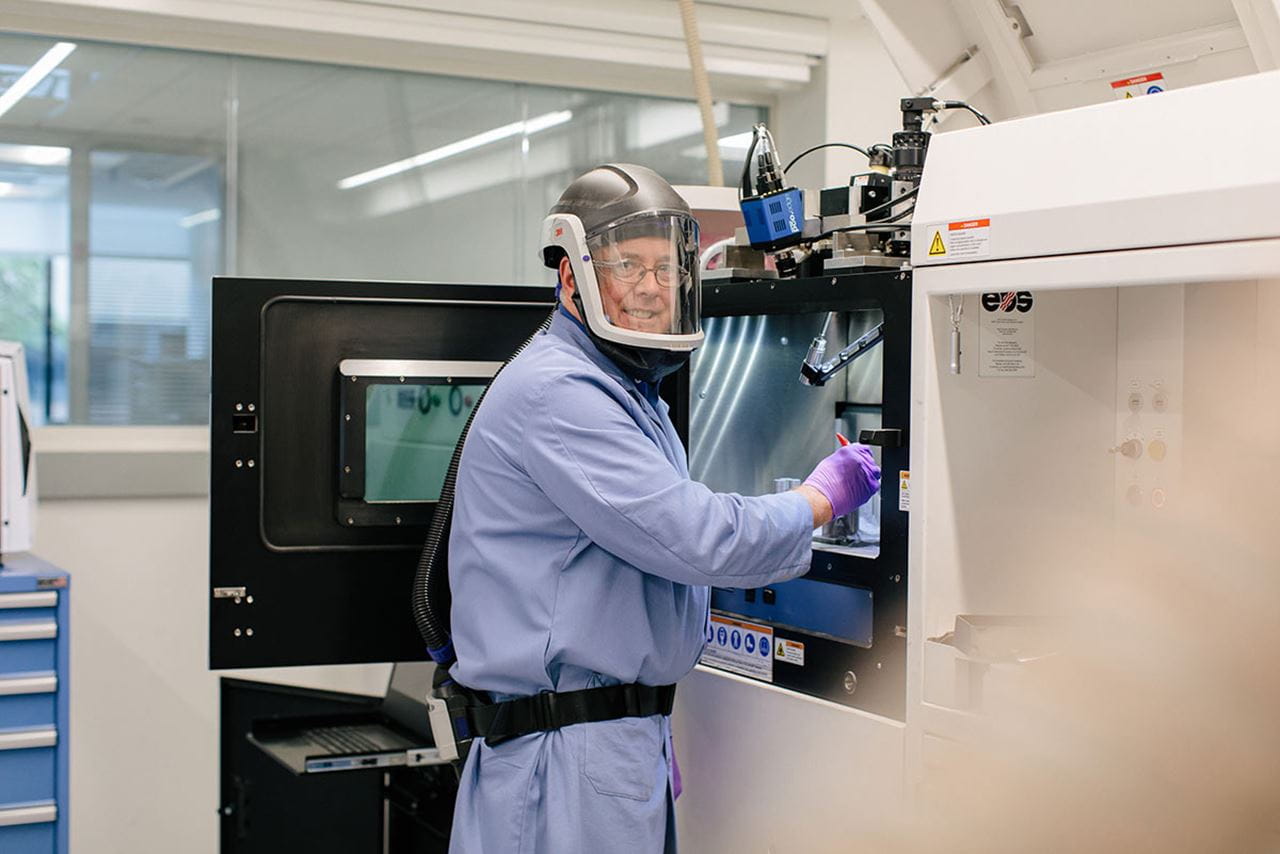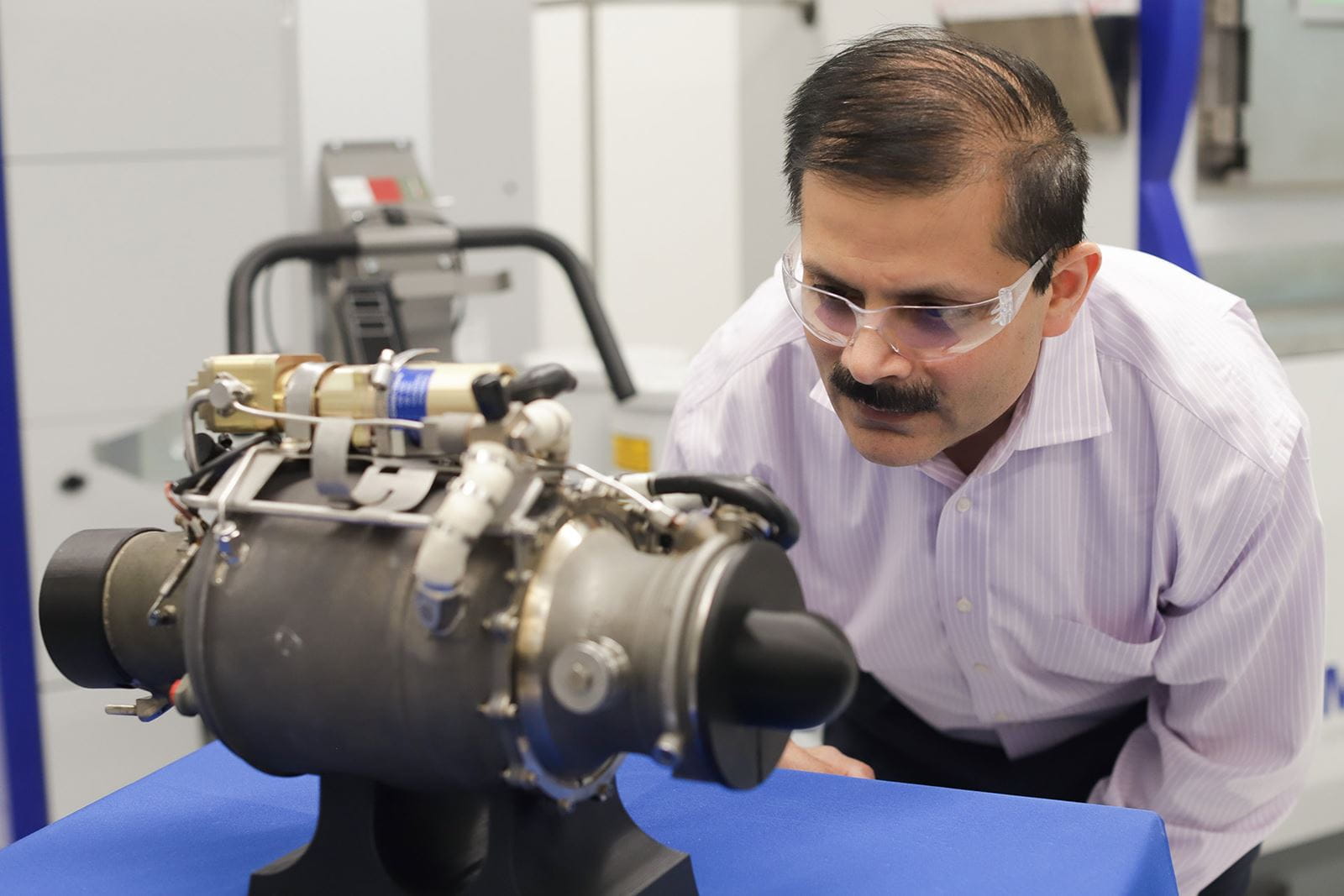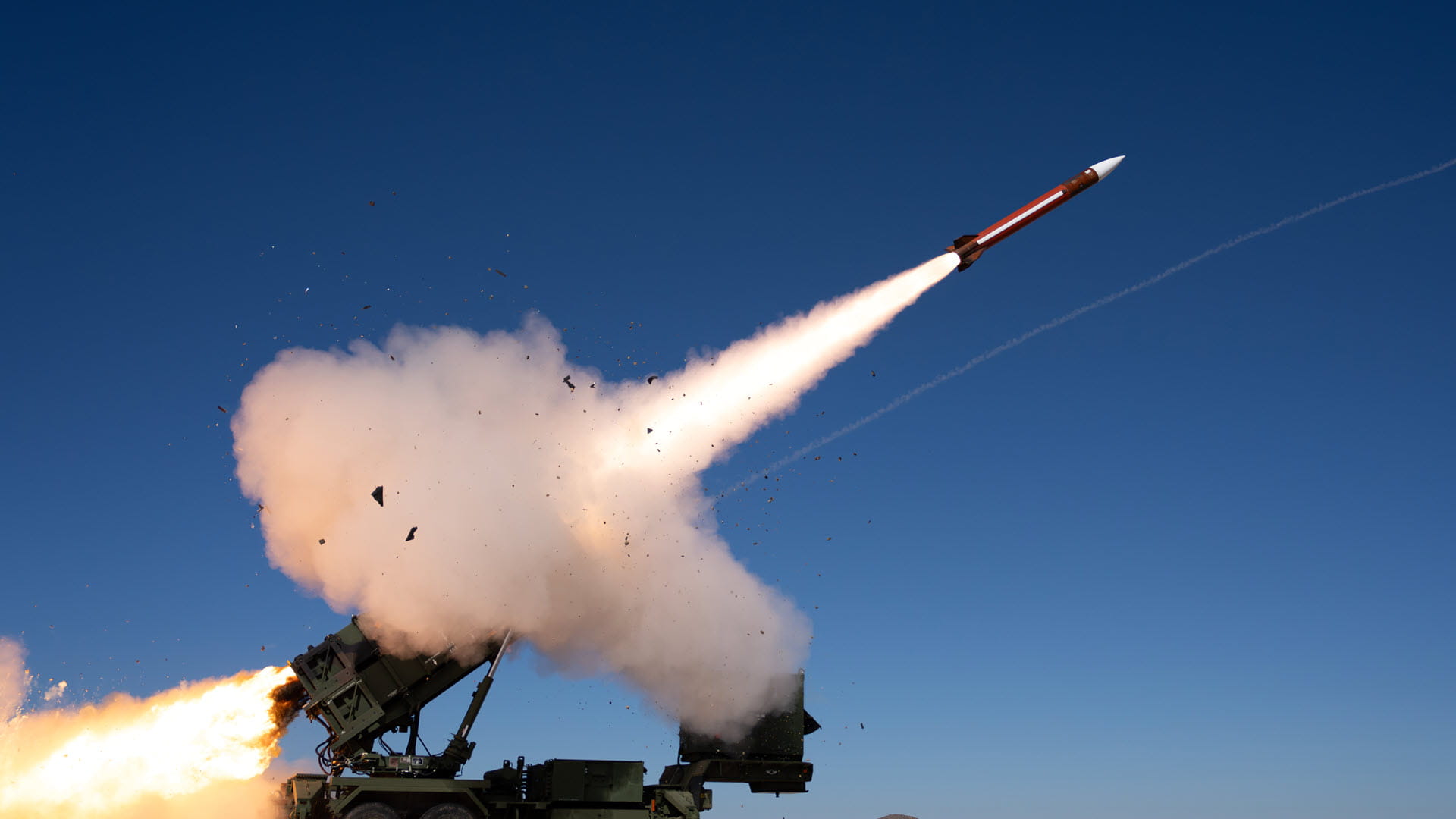A bright future for 3D printing
COVID lessons help illuminate the possibilities for additive manufacturing
They had 25,000 face shields to produce and two weeks to do it.
For the Raytheon Technologies team working on a rapid-response effort at the onset of the COVID-19 pandemic, there was only one place to turn: additive manufacturing, also known as 3D printing. They sent a design to about 100 machines at company sites around the world, which in turn began cranking out personal protective equipment for emergency responders.
“It was unprecedented to bring the entire corporation together to print one single file across multiple processes and materials,” said Jesse Boyer, a fellow for additive manufacturing at Pratt & Whitney, a Raytheon Technologies business. “To ramp up to that volume that quickly is something that’s touted using additive manufacturing, but rarely demonstrated. The opportunity was a great learning experience.”It was also one of many ways that experts at the company are using additive manufacturing to serve customers better and to lay a foundation for the future of manufacturing in aerospace and defense. Raytheon Technologies was among the major manufacturers that helped launch a White House initiative called AM Forward, which aims to increase the use of additive manufacturing among smaller companies in the supply chain.
Advantages of 3D printing
While traditional manufacturing works by cutting away from a block of material, additive manufacturing builds parts in layers, often using lasers or chemical processes to bond materials including powder, wire, filament and liquid.
That means it can easily make designs that would be difficult or impossible with older methods. Take, for example, a heat exchanger for a jet engine. Traditional methods have produced block-like components that take up a certain amount of space and weight. Additive manufacturing could weave organic shapes that fit into tighter spaces, Boyer said.
And that’s just the start of it.“The wild side is to continue to do that – to make very complex, yet optimized structures for areas we couldn’t normally do in a jet engine,” he said. “We explore methods like bio-mimicry, by looking at the best nature has produced. Additive then reduces the constraints of conventional manufacturing and substantially increases our ability to optimize what we can manufacture going forward.”
Obstacles to overcome
As with any newer technology, there are challenges to overcome. Different machines can produce inconsistent results, depending on such factors as the material used and the process involved, said Paula Hay of Collins Aerospace, a Raytheon Technologies business. Hay helped coordinate the effort to produce the face shields.
“One of the big complaints about additive is, if you do something on two different machines, you get two different answers,” Hay said, adding that the experience with face shields showed that “when you have a good design and a good file, you get a repeatable product. They looked alike; they were alike.”
That’s a good sign for the near future of 3D printing. Although traditional manufacturing is often more cost-effective for mass production, the fact that 3D printing is moving toward a more repeatable result points to a future where it is more competitive.
“If you step back and look at additive manufacturing, the 3D printing industry, there was a significant amount of hype 10 years ago,” said Venkat Vedula, executive director of the Raytheon Technologies Additive Manufacturing Process and Capability Center, part of the company’s Technology & Global Engineering team. “It was almost treated like a panacea that would replace all the traditional manufacturing. Now we have a better understanding of the technology and a more realistic understanding of where it will add a benefit.”
The value of additive manufacturing today comes in four main areas, Vedula said.
- Optimized design. “There are novel, generative designs that can’t be made with conventional manufacturing, and even if you could, it would be (prohibitively expensive),” he said.
- Part unitization. Vedula offers the example of a fuel nozzle that can be 3D-printed in a single piece. “We can reduce the lead time by several months to five or six weeks,” he said.
- Part substitution. Additive manufacturing can reduce the lead time or cost for low-volume parts.
- Aftermarket. Additive manufacturing can produce parts at the point of use. “If we have an aircraft on the ground and can’t repair the parts, if you have the CAD (computer-assisted design) model, you can print it right there,” he said.
The future of 3D printing
It’s helpful to think of 3D printing as a tool in the toolbox for the future of manufacturing, Vedula said.
“Additive is not going to replace cheap metal parts, and it shouldn’t because there is a technology that has been matured over centuries,” he said.
Where it should come in, he said, is in cases where it makes the most sense. He pointed to a breakthrough in the medical industry, where additive manufacturing helped create better titanium implants and fueled improvements in machines and the lasers they use.
Today, according to Vedula, companies like Raytheon Technologies are well-positioned to advance the technology: “Aerospace and defense is certainly in the forefront.”
One critical part of those advancements is the participation of suppliers, particularly the small and diverse suppliers who make up nearly half Raytheon Technologies’ supply chain. By scaling production on parts such as heat exchangers, stators and nozzles, they can help the company reduce the complexity of its parts, shorten development times and improve its ability to sustain products in the field.
And clearly, there’s a lot of work to do. Widespread adoption of additive manufacturing would require, among other measures, certification of 3D-printed parts, defining best practices for additive design processes, and training for engineers.
"We're at a tipping point for greater use of additive manufacturing across our value chain. We're always looking to evaluate where we can use it to create new products, and to sustain our legacy programs,” Boyer said. “The vision is that additive manufacturing – with its design abilities, performance-enabling capabilities and its manufacturing efficiency opportunities – will take its place in our toolbox, right alongside our conventional tools and processes."

A technician operates a 3D printing machine. The face shield protects from the materials used, which can come in the form of fine powders.


